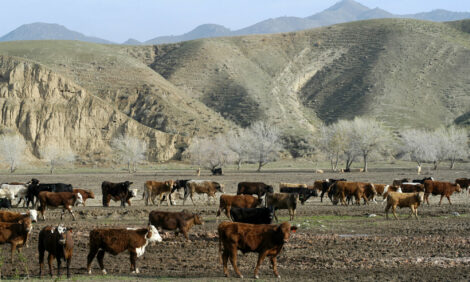



Weaning Now Reduces Pasture Loss, Cow Stress
US - Now is the time for beef producers with spring-calving herds to complete weaning and consider calf marketing options, a Purdue Extension beef specialist says.Timely calf weaning reduces cow energy needs and pasture stress, and allows pregnant cows time to gain weight heading into winter.
"Weaning helps stretch pasture resources, and longer grazing means using less harvested feed, such as hay or silage," Ron Lemenager said. "If we wean calves and take them off of pasture, we can reduce cow pasture consumption by 25 per cent, as well as eliminate the calves' pasture intake and trampling losses associated with their hooves. Collectively, this should translate to a 30-40 per cent stretching of pasture resources."
Weaning a calf also reduces stress on the mother. When cows lactate, they have much higher energy needs and they gain less weight. The result is that they have to eat more and have a harder time improving body condition heading into the cold winter months, Mr Lemenager said.
"Early weaning of spring-born calves allows cows to gain both weight and body condition when nutrient requirements are low and the environment is more friendly," he said.
Once calves are weaned, producers have a couple of marketing options.
The first is to take calves directly to the sale barn. The second is to feed calves for a few weeks and sell them at higher weights. Lemenager said early-weaned calves can be placed onto a feed ration, such as a mix of 40 parts soybean hulls and 60 parts corn gluten feed, or other formulated ration that is balanced with minerals, which can create gains of approximately 2 pounds per day with excellent feed efficiencies.
"It makes sense to feed calves for 45 days and add weight to them if it's economically feasible," Mr Lemenager said. "At current market prices, if calves can gain 2 pounds per day for less than $2 per day, or a cost of gain of $1 per pound, the producer is going to make money on that added weight."
For example, if a 500-pound calf needs 10 pounds of feed per day to gain 2 pounds per day and feed cost is $300 per ton, feed costs would be $1.50 per day with a cost of gain of 75 cents per pound.
"If you can sell these calves at $1.50 per pound, there's definitely some economic gain," Mr Lemenager said.
Another way producers might receive a premium for their animals is to fully precondition them before marketing. That means that in addition to weaning and feeding calves, producers can vaccinate, castrate and dehorn the animals.
But before going that route, Lemenager said producers need to know their markets and determine if the extra effort and costs associated with fully preconditioning calves will be more than offset by increased calf value.
"Doing some of these things can add value, but producers need to understand the market and what it is willing to pay for," he said. "If doing the extra work will help net income, why not take advantage of it?"


